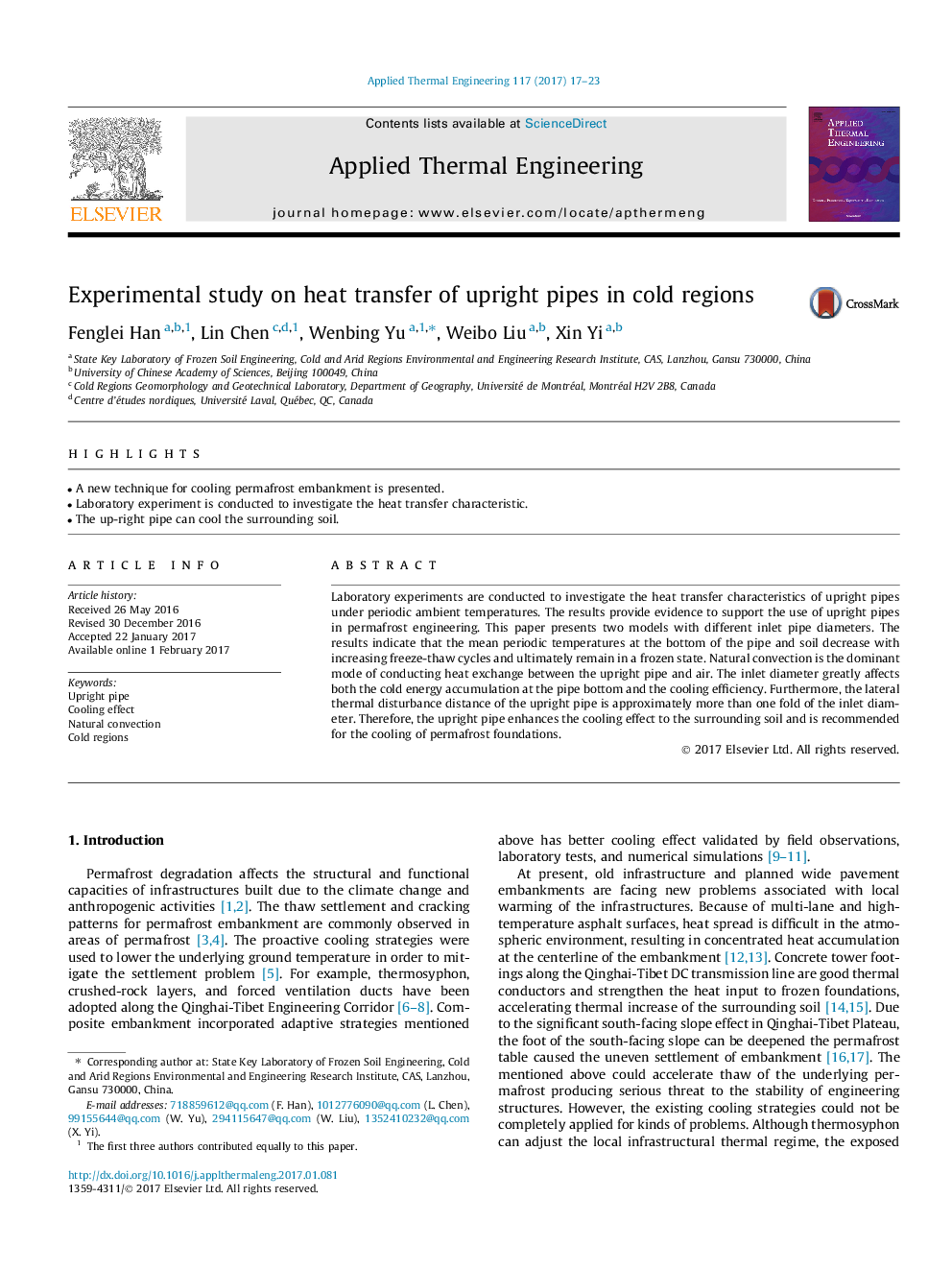| Article ID | Journal | Published Year | Pages | File Type |
|---|---|---|---|---|
| 4991494 | Applied Thermal Engineering | 2017 | 7 Pages |
Abstract
Laboratory experiments are conducted to investigate the heat transfer characteristics of upright pipes under periodic ambient temperatures. The results provide evidence to support the use of upright pipes in permafrost engineering. This paper presents two models with different inlet pipe diameters. The results indicate that the mean periodic temperatures at the bottom of the pipe and soil decrease with increasing freeze-thaw cycles and ultimately remain in a frozen state. Natural convection is the dominant mode of conducting heat exchange between the upright pipe and air. The inlet diameter greatly affects both the cold energy accumulation at the pipe bottom and the cooling efficiency. Furthermore, the lateral thermal disturbance distance of the upright pipe is approximately more than one fold of the inlet diameter. Therefore, the upright pipe enhances the cooling effect to the surrounding soil and is recommended for the cooling of permafrost foundations.
Related Topics
Physical Sciences and Engineering
Chemical Engineering
Fluid Flow and Transfer Processes
Authors
Fenglei Han, Lin Chen, Wenbing Yu, Weibo Liu, Xin Yi,
